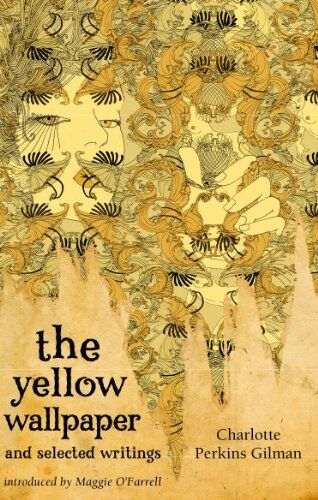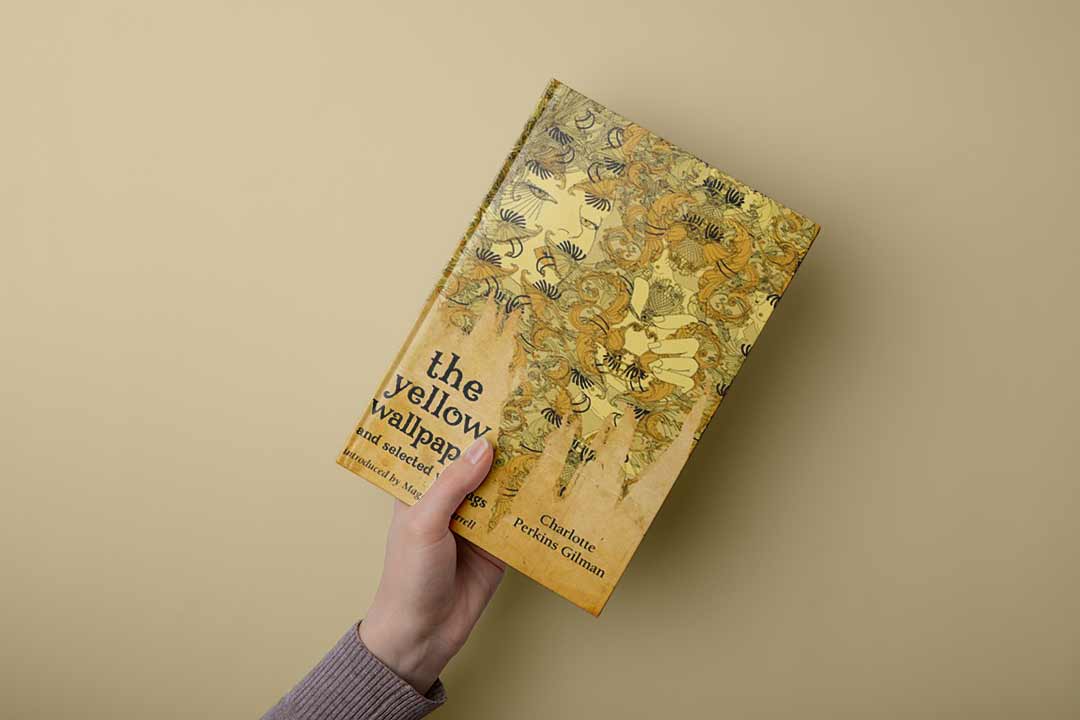Title: The Yellow Wallpaper
Author: Charlotte Perkins Gilman
Published in: The New England Magazine
Genre: Short Story, Feminism, Mental Health
First Publication: 1892
Language: English
Major Characters: An unnamed narrator (A young, upper-middle-class married woman), John, Jennie
Narration: First Person
Themes: The Subordination of Women in Marriage, The Importance of Self-Expression, The Evils of the “Resting Cure”
Book Summary: The Yellow Wallpaper by Charlotte Perkins Gilman
First published in 1892, The Yellow WallPaper is written as the secret journal of a woman who, failing to relish the joys of marriage and motherhood, is sentenced to a country rest cure. Though she longs to write, her husband and doctor forbid it, prescribing instead complete passivity. Narrated with superb psychological and dramatic precision, this short but powerful masterpiece has the heroine create a reality of her own within the hypnotic pattern of the faded yellow wall-paper of her bedroom—a pattern that comes to symbolize her own imprisonment.
This key women’s studies text by a pivotal first-wave feminist writer, lecturer, and activist (1860-1935) is reprinted as it first appeared in New England Magazine in 1892, and contains the essential essay on the author’s life and work by pioneering Gilman scholar Elaine R. Hedges.
Book Review: The Yellow Wallpaper by Charlotte Perkins Gilman
The Yellow Wallpaper book is a novella written by Charlotte Perkins Gilman in the late nineteenth century. The book’s plot is based on the author’s biography. More precisely, it’s an introspection of the author, a description of her feelings during her post-partum depression.
For many people, reading this book is a unique chance to understand a mental disorder through the eyes of a person experiencing depression. Depression is among the most widely-spread mental health problems. So, it’s crucial to know more about this issue.
The Yellow Wallpaper essays: What to Consider
To get the gist of a book, you should focus on its most important quotations, even if you didn’t read it. The following one can be a perfect example. “The colour is hideous enough and unreliable enough, and infuriating enough, but the pattern is torturing”. The main heroine’s feelings and moods are projected on this yellow wallpaper. It is as if she sees the reflection of her inner self on the wall. Wallpaper becomes a mirror for her inner world. And she doesn’t like what she sees there.
Also, Yellow Wallpaper essays can open your eyes to gender, mental, and oppression issues behind the plot. You can explore the story’s symbolism using examples of essays on The Yellow Wallpaper, learn more about characters’ psychology, and find inspiration for your writing. Not only may students benefit from the story’s analysis, but they can also use the samples to organize their next writing assignments better.
Storyline: Things to Know
The Yellow Wallpaper follows the narrator as she descends into lunacy. The narrator is a woman whose husband, John, a doctor, tells her to take it easy and cease keeping a journal. Nonetheless, the narrator is a writer at heart and a creative mind.
She discovers a room that was previously a nursery on the top level of their leased home. The presence of the yellow wallpaper on the walls prevents her from enjoying her time there. She progressively gets captivated and obsessed with the color and pattern on the walls. With time, it gets to the point that she can’t tell the difference between truth and fantasy. There are not so many definite Yellow Wallpaper themes to discuss because there are not many events in the story. It’s all about feelings and perceptions and everything in between.
Plot Development
What should be a relaxing vacation for a lady and her husband turns into an exhausting mental fight. You won’t be able to take a deep breath while reading this fascinating description of postpartum depression and a husband’s dominating actions under the cover of therapy.
From the get-go, it’s evident that the narrator isn’t in the best of health. She may be experiencing depression, but doctors of the period would likely diagnose her with “female hysteria” or a nervous breakdown. Her increasing, savage loathing for the wallpaper is fascinating since it starts as a simple distaste and escalates into something unfathomable.
The narrator’s mental state gets murky later on. She doesn’t know what’s wrong with her and is lost in her confusion. Given that she finds fault with the wallpaper’s lack of neatness, we may even assume that she suffers from OCD too.
Characters
The main character is a narrator, who is a delicate, creative, and intelligent woman with a vivid imagination. All we know about the story is taken from her perception. The narrator’s spouse is shown as the sensible, common-sense loving, scientifically judged opposite of his wife. The narrator seems misinterpreted, and John comes out as overprotective and limiting. Uncertainty surrounds current events. So one’s point of view in The Yellow Wallpaper might change.
This story has only two characters – the narrator and her husband. But the yellow wallpaper is mentioned so many times that sometimes it seems it’s a character too. If so, what does it symbolize? The yellow wallpaper in this narrative can be seen as a metaphor for various things, including unmet literary ambitions, suppressed sexual desires, or even “contemporary” fears of foreign migration. One alternative explanation attributes the yellow wallpaper to the use of arsenic in production around the end of the nineteenth century. One of the book’s benefits is its openness to multiple interpretations. The story is so rich in possible senses that you might want to write a research paper after reading it.
Conclusion
Charlotte Perkins Gilman’s narrative has long been noted for its eerie quality and the variety of meanings that may be applied to it. Charlotte Perkins Gilman brought to light the tedium and dullness of a woman’s life in the 19th century, as well as the sexism and mistrust women faced when discussing their creative or intellectual endeavors. Whether taken as a disturbing nightmare, a comprehensive review of mental illness, or a simply feminist text highlighting the situation of women at the turn of the century, the book is riveting and really deep.






